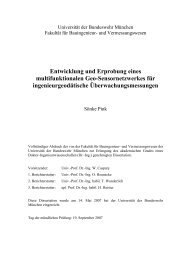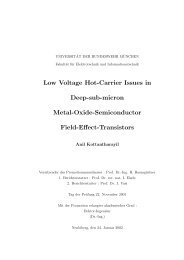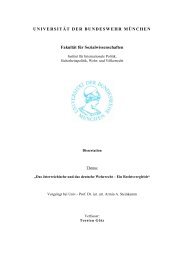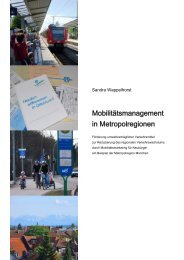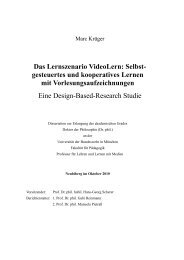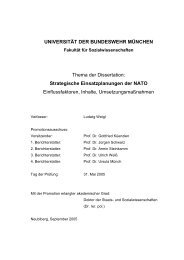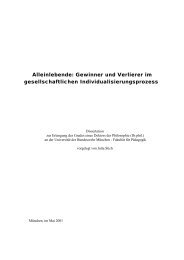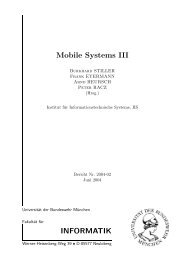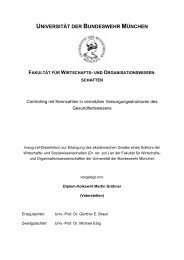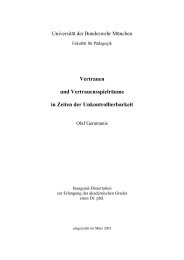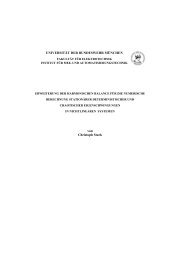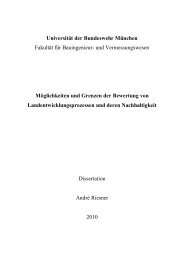Satellite Orbit and Ephemeris Determination using Inter Satellite Links
Satellite Orbit and Ephemeris Determination using Inter Satellite Links
Satellite Orbit and Ephemeris Determination using Inter Satellite Links
- No tags were found...
You also want an ePaper? Increase the reach of your titles
YUMPU automatically turns print PDFs into web optimized ePapers that Google loves.
<strong>Inter</strong> <strong>Satellite</strong> <strong>Links</strong>Autonomous Onboard Processinglike the one used by GPS, is much less suited for augmentation. The propulsive forces wouldhave to be modelled as generic “orbit perturbations” which is likely to require more modelparameters than in the example above. Although limited to short thrust periods, this method issuited for nearly arbitrary (high) thrust levels.If thrust levels are low (low thrust chemical or ion propulsion), the thrust can be considered asan additional force in the orbit prediction process. The normal broadcast message is then fitover an interval containing a thrust phase, as would be over a normal free flight phase.The error introduced by this depends strongly on the acceleration by the propulsion system. Ifthe error introduced remains small, this solution would be favourable, because there is noadditional navigation message. In the following, results concerning this method will beshown.To evaluate the errors introduced by orbit manoeuvres, three different orbit types have beenconsidered: GEO, IGSO <strong>and</strong> LEO. Thrust <strong>and</strong> velocity increment have been altered tosimulate typical manoeuvres. The following table shows the parameters used in thesimulation.Chemical PropulsionIon PropulsionSpecific Impulse 315 s 2568 sThrust 4 x 10 N 2 x 18 mNBurn Time for a 50 m/sManoeuvreBurn Time for a 1 m/sManoeuvre11.36 min Not Considered(212 h ~ 9 days)13.7 s 4.2 hTable 7-4 Simulation ParametersThe chemical propulsion case is represented by 4 x 10 Newton thrusters <strong>using</strong> storablepropellant like MMH / NO 4 . The ion propulsion consist of two Hughes XIPS thrusters fromthe HS 601 HP.Two manoeuvres have been performed for all three satellite types, covering the followingcases:• The 50 m/s manoeuvre represents the case, where orbit manoeuvres are conductedinfrequently, with a high velocity increment. This only makes sense <strong>using</strong> high thrustpropulsion, thus the ion propulsion has not been considered for this case.• The 1 m/s manoeuvre represents the case, where orbit manoeuvres are conductedfrequently, but with a low velocity increment. In this case, the ion propulsion has beenconsidered, although the thrust phase is not impulsive, but more like a permanent actingforce.R. Wolf Page 161



